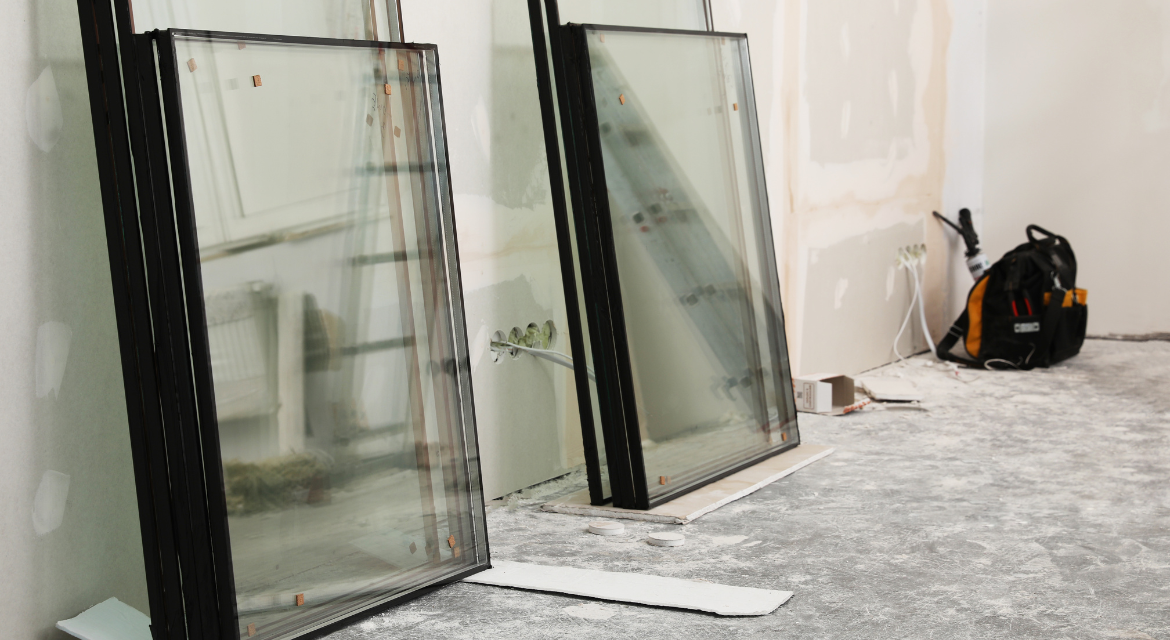In the construction sector, choosing the right glazing is a strategic decision that directly impacts a building’s thermal performance, acoustic comfort, and energy consumption. Whether you are a developer, architect, carpenter, or contractor, the question often arises: Should you choose double glazing or triple glazing?
Here is a complete comparison to help you make the right choice for your projects, whether they are residential (houses, apartment buildings) or commercial (offices, public buildings, schools, etc.).

What Is Double Glazing?
Double glazing consists of two panes of flat glass separated by an air gap or an insulating gas layer (argon or krypton). It has become the standard in most new builds and renovation projects.
Advantages of Double Glazing:
Excellent thermal insulation (Ug = 1.0 to 1.4 W/m²·K)
Good acoustic insulation
Competitive price and wide availability
Compatible with all types of frames
Best suited for:
Single-family houses
Apartment buildings
Professional premises with moderate climate exposure
Budget-optimized projects
What Is Triple Glazing?
Triple glazing is made of three panes of flat glass separated by two insulating gas layers. It offers higher thermal performance, but comes with added weight and cost.
Advantages of Triple Glazing:
Very high thermal insulation (Ug as low as 0.5 W/m²·K)
Significant reduction in heat loss
Excellent performance in cold climates
Helps reduce energy bills
Best suited for:
Passive houses or low-energy buildings
Mountain areas or harsh climates
Demanding commercial buildings (hospitals, high-performance schools, eco-districts)
Projects aiming for environmental certifications (RE2020, BREEAM, HQE, etc.)
Double vs. Triple Glazing: A Comparison
| Criteria | Double Glazing | Triple Glazing |
|---|---|---|
| Thermal insulation (Ug) | 1.0 – 1.4 W/m²·K | 0.5 – 0.8 W/m²·K |
| Acoustic insulation | Good | Excellent |
| Light transmission | Higher | Lower (depending on thickness) |
| Weight | Light to medium | Heavier (impact on frames) |
| Price per m² | Cheaper | 30–60% more expensive |
| Return on investment | Medium term | Long term |

What Are the Criteria for Choosing Between Double and Triple Glazing?
1. Geographic Location
In the north or in mountainous regions, triple glazing is relevant. In southern areas, it can be counterproductive (risk of overheating, unnecessary cost).
2. Type of Building
A standard apartment building or single-family house performs well with quality thermal double glazing. On the other hand, HQE-certified buildings or passive houses benefit more from triple glazing.
3. Overall Project Budget
Triple glazing increases the cost of joinery, transport, and installation (weight, dimensions). It is important to ensure that the investment is justified by long-term energy savings.
4. Window Orientation
On north-facing façades, triple glazing is advantageous. On south-facing façades, double glazing is often preferable to make the most of free solar gains in winter.
Why Work with a Specialized Supplier of Custom Glass?
At NOXEM GROUP, supplier of glass for professionals, we help you choose the insulating glazing best suited to your project.
We offer:
Custom double glazing with argon gas, Low-E, and solar control
High-performance triple glazing for demanding buildings
Tailored glass solutions for residential and commercial projects
Custom glass cutting with delivery to sites across Europe
In Summary: Which Should You Choose?
Double glazing: the standard, cost-effective solution suitable for most projects
Triple glazing: for very high-performance buildings in cold climates
Need expert advice? Contact NOXEM GROUP, specialist in technical flat glass, for a fast quote or personalized guidance.




